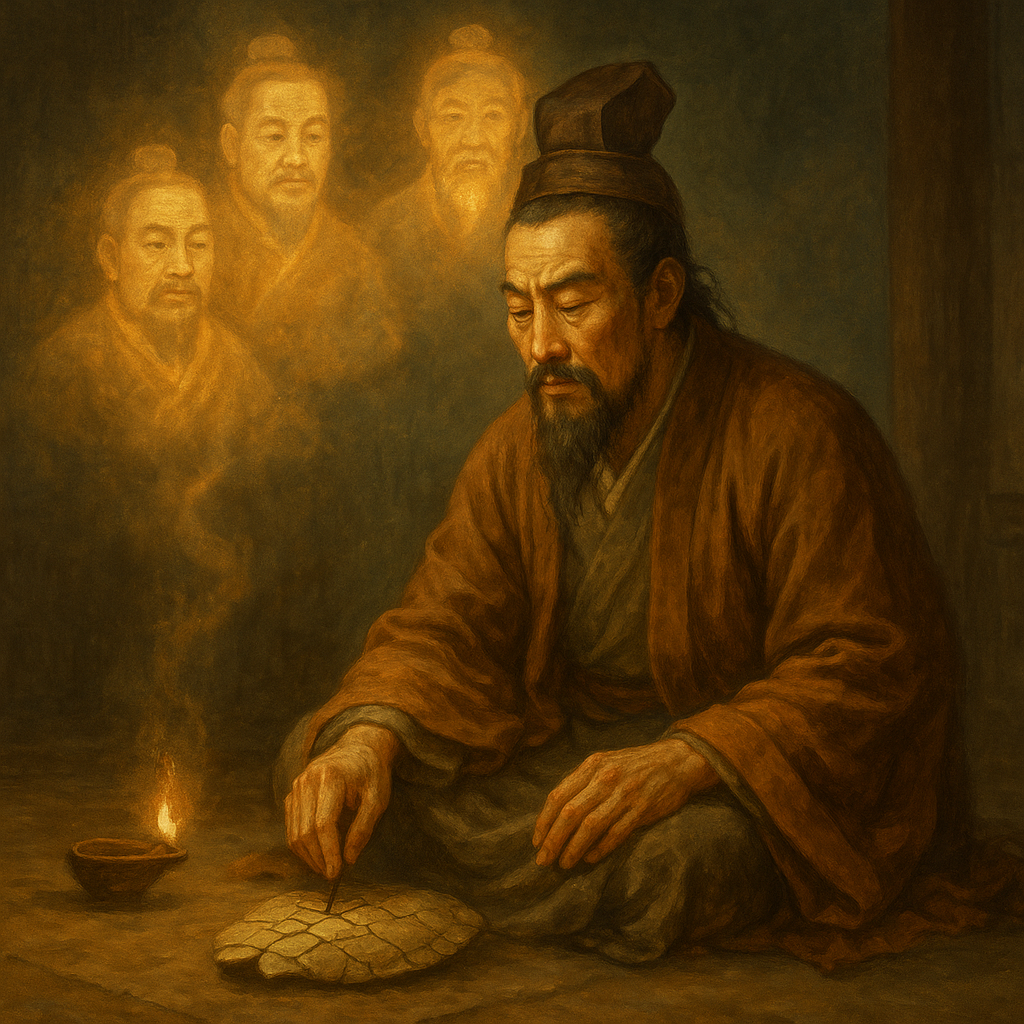Ancestor Communication in Early Chinese Traditions: Techniques and Development
Introduction
Ancestor communication lies at the heart of Chinese spirituality and social life. Long before the rise of Daoism, Confucianism, or Buddhism, Chinese communities developed complex rituals to connect with their deceased kin. These practices, which later shaped both folk religion and state ritual, reflect a worldview in which the living and the dead remained in constant dialogue. This article explores the earliest techniques of ancestor communication in Chinese traditions, tracing their development from the Shang dynasty to later ritual systems.
The Origins: Shang Dynasty Ancestor Rituals (c. 1600–1046 BCE)
The Shang dynasty provides the earliest evidence of ancestor communication in China, preserved in oracle bone inscriptions.
Divination through Oracle Bones (甲骨文): Questions were carved onto ox scapulae or turtle plastrons, then heated until cracks appeared. The patterns were interpreted as answers from the ancestors.
King as Chief Medium: The Shang king functioned as the primary medium, mediating between the royal lineage and ancestral spirits.
Ritual Offerings: Food, drink, and animal sacrifice were presented to sustain ancestors in the spirit world.
This reveals that ancestor communication was not casual—it was central to governance, war decisions, and agricultural planning.
Techniques of Ancestor Communication in the Zhou Dynasty (c. 1046–256 BCE)
The Zhou dynasty expanded and systematized ancestor rituals, embedding them within a structured worldview.
Bronze Ritual Vessels: Elaborately cast bronzes were used in sacrificial rites, carrying inscriptions that invoked ancestors to bless descendants.
Shamanic Mediation: Wu (巫), or shamans, conducted dances, chants, and trance states to facilitate communication. These embodied techniques emphasized possession and ecstatic states.
Family Lineage Rites: Communication extended beyond kingship into the clan and household, ensuring that ordinary families maintained ties with their forebears.
This period marks the shift from exclusive royal mediumship to broader communal and familial practices.
Techniques of Development in Early Ancestor Rituals
Divinatory Tools:
Oracle bones (Shang) → Bronze inscriptions (Zhou).
Over time, divination became more symbolic, moving from fire-cracks to written invocation.
Trance and Spirit Possession:
Shamans (wu) entered altered states through drumming, chanting, and dance.
This allowed temporary embodiment of ancestors or deities to speak through the medium.
Offerings and Sacrifice:
Ancestors were nourished by food, drink, incense, and ritual slaughter.
The development of more symbolic offerings (incense, ritual wine) reduced reliance on animal sacrifice.
Ritual Architecture:
Ancestral temples and altars became focal points.
Lineages developed permanent sacred spaces to ensure continuous dialogue with the dead.
Confucian Influence: Ritual and Moral Order
By the late Zhou and into the Han dynasty, Confucian thought codified ancestor communication as essential for maintaining social and cosmic order.
Ritual Propriety (礼 Lǐ): Communication was framed as a moral duty, reinforcing filial piety.
Sacrificial Rites: Seasonal offerings became institutionalized, binding family to ancestor through cycles of remembrance.
Hierarchy of Spirits: Not all ancestors were equal—ritual focused on lineage heads and honored figures, mirroring family hierarchy.
This emphasis transformed ancestor communication from ecstatic trance to formalized ritual, laying the groundwork for later Chinese folk practices.
Legacy and Continuity
These early techniques have endured and evolved:
Ancestor Altars: Still central in Chinese homes today.
Spirit Tablets (神位 shénwèi): Wooden or stone tablets inscribed with the ancestor’s name became a focus of ritual invocation.
Seasonal Festivals: Qingming Festival (Tomb-Sweeping Day) preserves the Zhou tradition of tending graves and presenting offerings.
Daoist and Folk Mediumship: Spirit-writing and trance possession continue the shamanic line of communication.
Conclusion
The earliest forms of ancestor communication in China combined divination, trance states, ritual offerings, and sacred spaces. Over centuries, these practices shifted from royal oracle rituals to communal family rites, and from ecstatic shamanic possession to codified Confucian ceremonies. At every stage, ancestor communication reinforced the belief that the living and dead remain interconnected across dimensions of reality.
These traditions not only shaped Chinese religion but also continue to resonate in contemporary practice, offering one of the world’s most enduring examples of mediumship with the ancestral realm.

